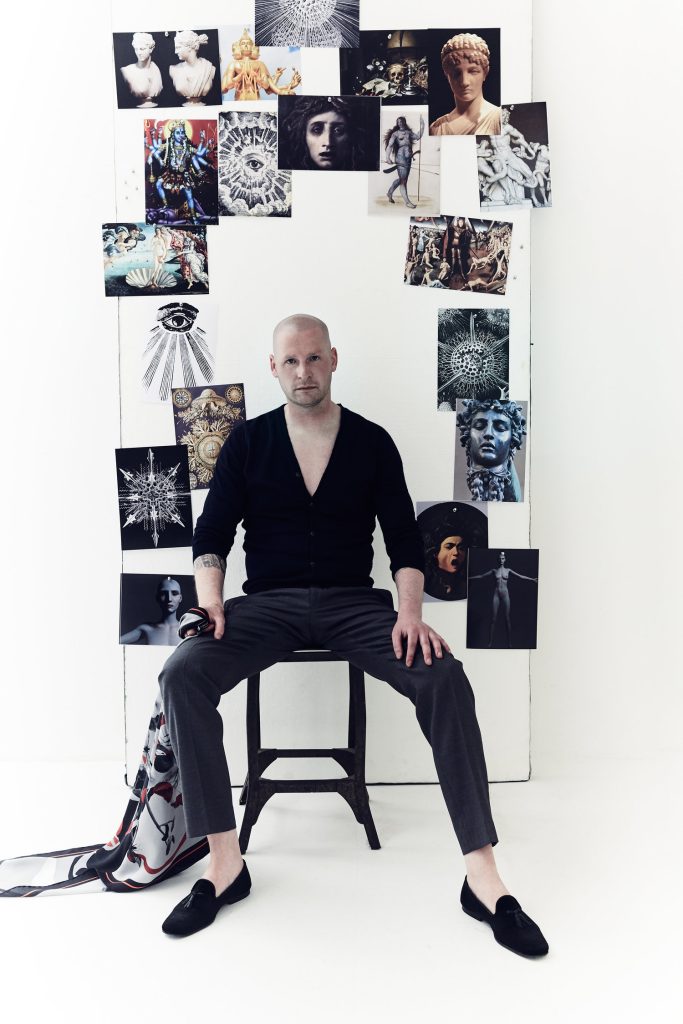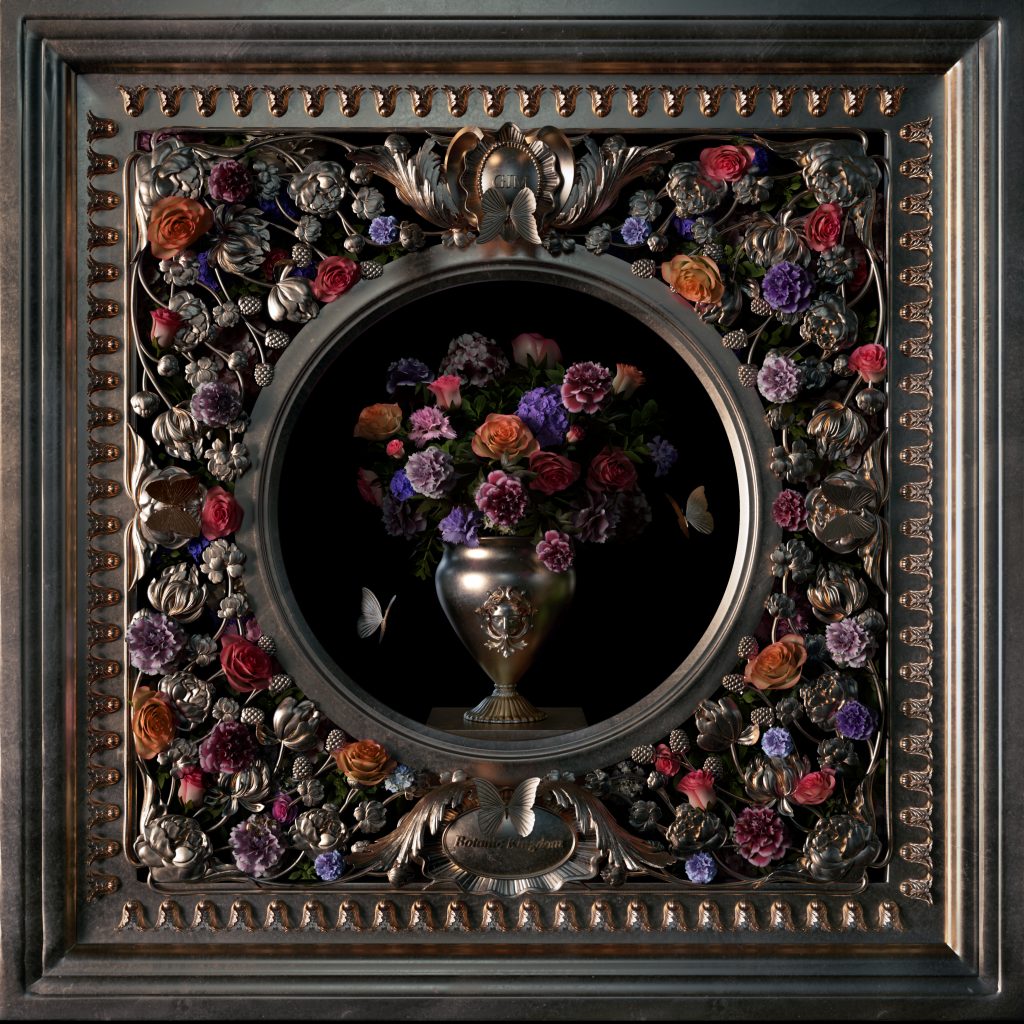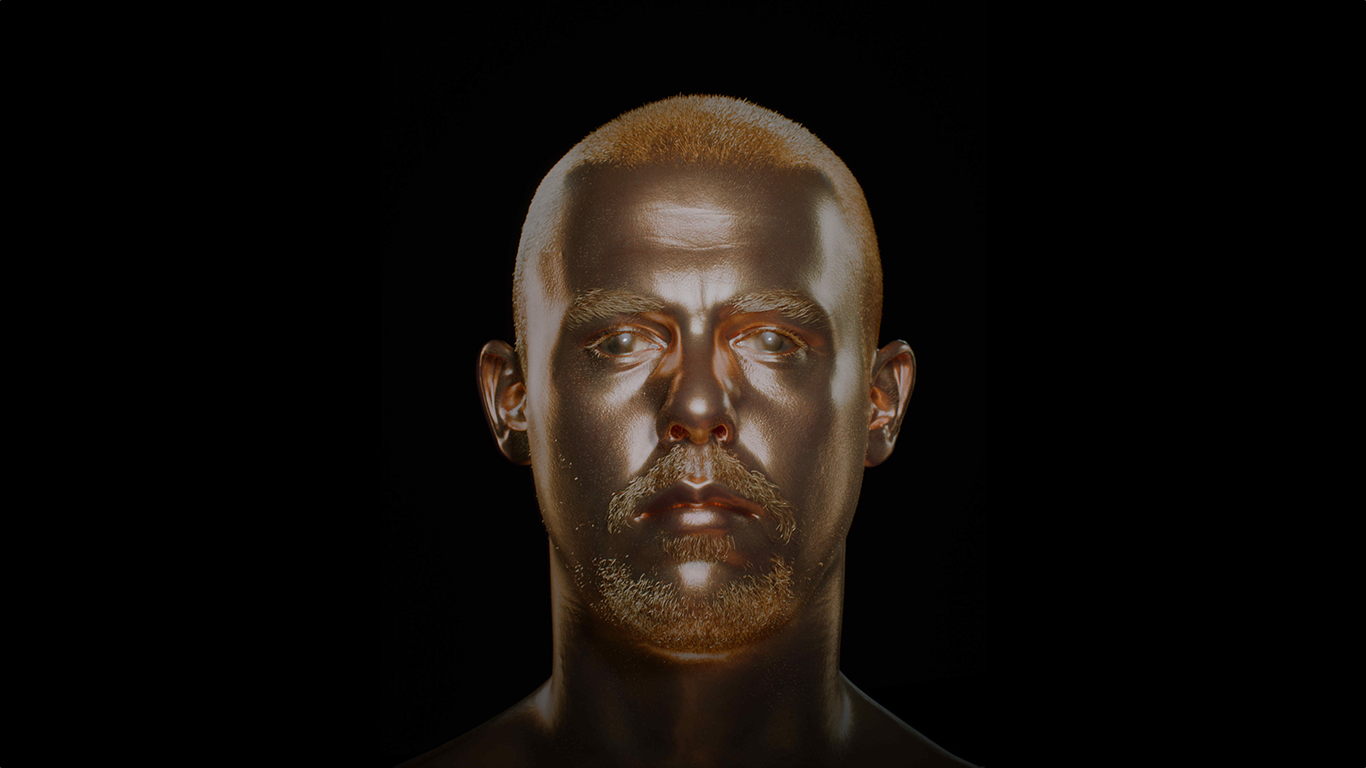As human beings, we often harbour a deep sense of fear towards life’s darker aspects—the strange, the unpleasant, and the shocking. These fears echo through our minds, influencing our thoughts about life, death, and rebirth. Is this darkness actually a beacon lighting the pathway of completion and curiosity, or is it merely fear—fear of the unknown or of what we do not understand? Confronting this darkness head-on, British artist Gary James McQueen delves into the dualities of existence and the ephemeral aspects of their nature.
McQueen engages with the obscure through a macabre aesthetic. His artistic practice is rooted in stark contrasts: beauty intertwined with brutality, the macabre married to the romantic, and a constant interplay between life and death. Storytelling is Central to his work, a fundamental element that underpins his creative process throughout his life.

Credit Nato Welton
The beauty and the brutal, the macabre and the romantic, life and death – is at the core of my practice
Gary James McQueen
This love of storytelling began in McQueen’s youth when he and his uncle, the late fashion legend Lee Alexander McQueen, would watch horror films together. This activity inspired them to start world-building, sketching ideas for characters and stories. ‘These films drove my imagination. Watching these fantasy films with Lee helped me understand how I could create my own worlds,’ McQueen recalls.
Initially starting in print and typesetting and teaching himself illustration, McQueen found an escape from the challenges of his everyday life when he went to work at his uncle’s fashion house, becoming the head textile designer. The McQueen brand was renowned for its avant-garde, theatrical, and often controversial designs, which made it one of the most influential fashion brands in late 20th-century and early 21st-century fashion. Celebrated for their runway shows, which were more than just fashion, high-art performance pieces, memorable for emotional power, raw energy and their determinedly contemporary nature, leaving a lasting impact on the fashion industry.
We see this emotional power and raw energy throughout McQueen’s work, informed by his foundation in illustration, photography and lighting and ultising the advanced capabilities of technology, particularly evident in his latest body of work, part of his first solo exhibition in the United States. McQueen contemplates the impermanence of life, mirrored in the luxury and indulgence of existence, alongside the ever-present certainty of death.
In works like Kintsugi Skull, McQueen adorns the universal symbol of mortality, with the cranium wrapped in delicate patterns reminiscent of fine porcelain and the jaw cast in gold, emerging from a purposeful lit shadowy ambience, the porcelain that plays with our perception of light and substance, showcases the fragility and the fleeting beauty of life.
In another piece, “Golden Icon Lee McQueen,” he immortalises his uncle. Set against a pitch-black background, Lee is rendered in lustrous gold, reminiscent of the gilt icons of Byzantine art. This unspoken dialogue, confrontational yet enigmatic, uses gold—a symbol of divinity and immortality—to imbue McQueen’s uncle with an aura of power and timelessness, creating a visual paradox between the human and the divine.
McQueen’s work has been exhibited to critical acclaim, including at London’s Victoria and Albert Museum, the Metropolitan Museum of Art in New York, and numerous galleries across the globe. His work serves as a vessel for contemplation, shrouded in luxurious mystery, inviting us to reflect on the fleetingness of beauty, the luxury of existence, and the certainty of death. A reminder to enjoy the fleeting moments of beauty and to ponder the ultimate equality brought by death. As McQueen himself says, “Life is not always beautiful, and that’s the beauty of it”.
Hi Gary, how are you? Could you start by sharing your journey into the arts, including your earliest memory of being drawn to them and how these experiences have influenced your career path?
Gary James McQueen: I grew up on a council estate in a working-class suburb of east London. When I was 5, I witnessed my father’s death in a car accident, and that event remains imprinted on my memory today. I had to face many challenges in my life and always had the need to escape from my reality and create a new one. My art is a vessel to navigate my own new realm and access my worlds.

From a start in print and typesetting, where you learned print production and illustration software, to becoming head textile designer at your uncle Alexander McQueen’s fashion house over seven years, could you share more about this journey and working with your uncle?
Gary James McQueen: Lee obviously played a key role in my life and career. I still remember watching the latest horror movies with him, transporting myself to fantastical worlds that still inspire my practice today. We would spend hours sketching out ideas for characters, stories, and places. Lee helped me understand how I could create my own worlds.

Your practice is focused on storytelling, depicted through cadaveric and horror themes that utilise the skull as the canvas of expression. Can we delve more into your practice, inspiration, and the themes in your work?
Gary James McQueen: Although my work addresses different topics and themes, the relationship between the distinct yet complementary aspects of life – the beauty and the brutal, the macabre and the romantic, life and death – is at the core of my practice. Life is not always beautiful, and that’s the beauty of it.

You’ve just opened your first show in the US at West Chelsea Contemporary. The exhibition showcases a series of never-before-seen works at the intersection of art, technology, and fashion. Can you tell us how the exhibition came about and share more about its essence?
Gary James McQueen: The exhibition provides a multi-dimensional experience that invites visitors into a macabre yet romantic environment dominated by digitally sculpted skulls, ethereal floral still life’s, and humanoid figures. This show has been a year in the making, and it’s been wonderful to reveal my latest series of artworks at West Chelsea Contemporary in Austin, Texas.
The interactive aspect of the exhibition allows visitors to participate in a digital fashion shoot using AI; this approach prompts the audience to engage with the works. How do you see this interaction altering the viewer’s experience and understanding of art?
Gary James McQueen: I hope the show offers a new perspective on the transformative power of technology when juxtaposed with artistic vision and purpose while exploring the relationship between humans and nature. Technology dominates the world we live in, transforming how we engage with each other, how we communicate, and our perception of what’s around us. Whether we like it or not, technology plays a key role in our present and future. It’s inevitable.

The “Talisman Skulls” series, drawing inspiration from Tibetan culture and reflecting personal themes like family addiction and domestic violence, showcases a unique synthesis of cultural and personal narratives. Could you discuss the process and challenges of blending these influences and the significance of this piece?
Gary James McQueen: The skull holds strong symbolic significance in Tibetan culture, representing the transient nature of existence and the complex cycle of birth and death. Similarly, the skull served as one of the first visual representations of the topics and themes explored through my work, often to remind us of the darkness we sometimes encounter in life. The way the role of the skull in Tibetan culture unintentionally overlaps with its significance in my art is what sparked the new Talisman Skull series.
Looking forward, Are there any exciting themes or materials that you’re eager to explore in your work?
Gary James McQueen: I am always on the lookout for mediums that allow my work to be significantly immersive, offering viewers escapism from reality. I am working on a ground-breaking exhibition which will launch in the Autumn and I am excited for visitors to fully dive into this engaging experience.

Finally, could you please share your philosophy on art and how you understand and express its core meaning and importance in both your personal and professional life?
Gary James McQueen: Art fully contaminates both my personal and professional life. There’s no separation as my practice is at core of who I am both as an artist and as an individual.
©2024 Gary James McQueen




